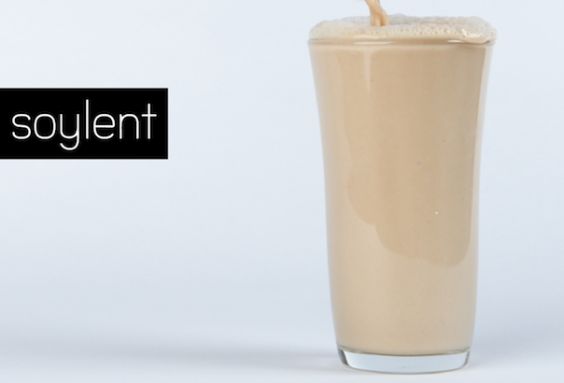Photo: http://soylent.me
When we last wrote about Rob Rhinehart, the 24-year-old software engineer had spent nearly two months without eating food and only drinking “Soylent,” a homemade nutrient concoction. Soylent was designed as part meal-replacement drink, part thought experiment, providing every necessary nutrient while challenging society’s current perception of nutrition.
Now, five months later, Rhinehart is still subsisting primarily on Soylent — but he’s not alone. The budding food entrepreneur has turned Soylent into a full time gig, building a team of six employees and selling more than $1 million in pre-orders on Soylent’s site through an insanely successful round of crowd funding.
Soylent got attention for its minimalist approach to nutrition, but could one man’s experiment really gain traction outside Rhinehart’s kitchen? And would going cold turkey on food do more psychological harm than good in an eating-obsessed culture? I caught up with Rhinehart to talk about his company’s rapid success, changing his formula, and how he thinks Soylent could change our relationship with food.
What It Is
Rhinehart’s original goal was to develop telecommunications platforms for developing countries. But while working on solving that issue at Y Combinator, a startup incubator, he discovered an altogether different problem: Rhinehart worked extremely long hours, making it nearly impossible to prepare nutritious meals. So Rhinehart turned his kitchen into a bootleg science lab to develop a quick alternative. After a month of trial and error, he had his solution: A shake that provides every essential nutrient the body needs to function — protein, fat, carbohydrates, vitamins and minerals — and nothing more.
The project went viral, with Rhinehart’s blog posts about Soylent spreading through social media and receiving mainstream media coverage. Requests began pouring in from individuals curious to try Soylent for themselves. Overwhelmed by the demand, Rhinehart recruited five friends and began raising money for the project through Crowdhoster, an online fundraising platform similar to Kickstarter. While their initial goal was to raise $100,000, Soylent preorders passed $800,000 in 30 days and have since surpassed$1 million.
“I thought this idea was going to be very popular, but I thought it was going to take a lot of time,” Rhinehart told Greatist. Soylent now has more than 120,000 pre-orders, which Rhinehart claims is more than any other food startup in history.
For the Soylent team, the challenge quickly moved from convincing folks to try the product to meeting massive public demand. The Soylent team has started working with dietitians and food scientists to make the just-add-water formula easier to mix, better tasting, and quicker to manufacture. Soylent’s protein source has changed from whey to a combination of rice and pea protein in order to make the product vegan-friendly. In order to sell nationwide, Rhinehart also got his formula FDA-approved.
“Soylent isn’t a medical product; we just have to prove it’s safe to food standards. There are so many foods out there that are terrible for you, when we presented [FDA representatives] with something that’s supposed to be healthy, they were actually pretty enthusiastic.”
Why It Matters
Rhinehart estimates Soylent still makes up 90 percent of his meals. Surprisingly, he says it gives him plenty of energy to exercise and keep an active work schedule. The project, however, isn’t without its detractors, and some health professionals have argued that replacing food with meal replacements for non-medical reasons could contribute to eating disorders.
But Rhinehart claims Soylent isn’t meant to completely supplant food’s place at the table. Instead, he hopes Soylent will allow people to appreciate food more than ever and curb unhealthy, mindless eating. What’s unclear is whether consumers will actually use Soylent to gain a better understanding of nutrition or just push it to the back of their minds once and for all. For Rhinehart, Soylent is likely just the first in a new category of foods that use science to make nutrition more accessible, fun, and healthier than ever before.
“What we’ve done is separate out food as fuel and nutrition, and food as recreation and enjoyment,” Rhinehart says. “I think in the future we’ll use technology to design all kinds of incredibly fun, flavorful, and healthy foods. We’ll have food for health and food that we enjoy for fun, and they’ll be far better than anything we’ve consumed in the past.”
Meal replacements are nothing new, but making them for the masses has quickly gone from sci-fi to viable, crowd-funded product. And while Soylent may not be for everyone, with more than 100,000 eager fans awaiting orders later this year, Rhinehart’s company is already making us rethink our relationship to grub.
Photo: Rob Rhinehart
Would you try Soylent? Follow along next week as Greatist Fitness Editor David Tao tries living off Soylent for seven liquefied, perspective-challenging days.


